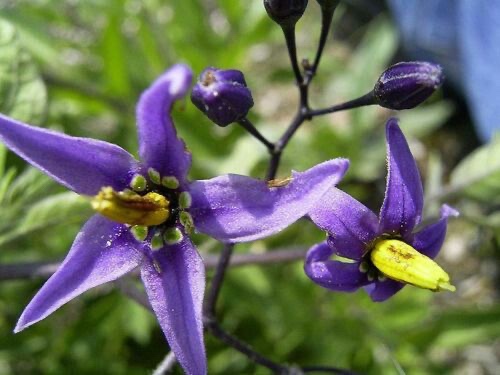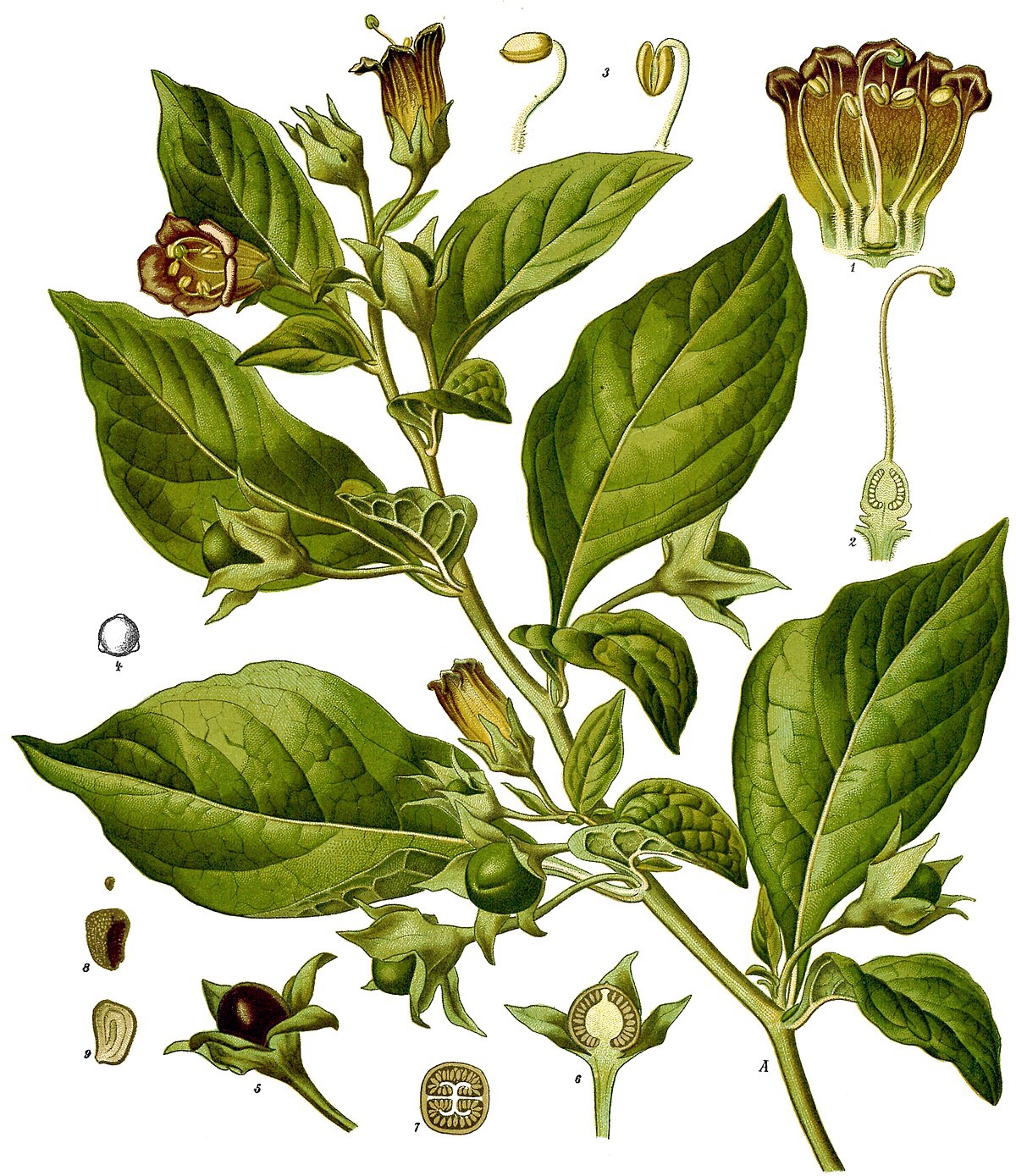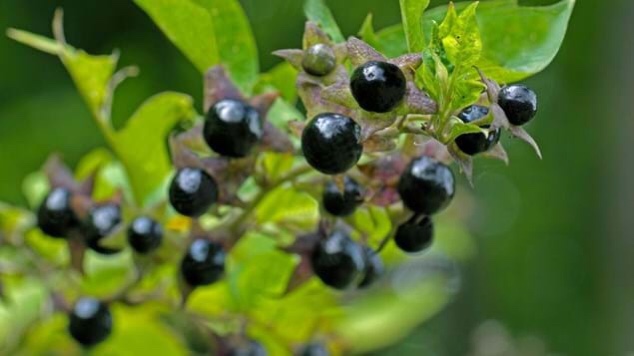Deadly Nightshade (atropa belladonna)
For many, this is the star of the poison plants; named for Atropos, one of the Three Fates, who held the shears with which she could cut the thread of life. It grows in scrub, woods, woodland margins and thickets with the dark purple flowers appearing in June to August and the black, shiny berries from August to November. Most people have heard of deadly nightshade even if they have never seen it growing in the wild; its combination of providing deadly poison and its use to beautify give it a romantic attraction that is hard to beat. Add to that the hallucinations it may also cause and its fascination is complete. The plant’s very name, ‘belladonna’, comes from its use by Venetian women to make themselves ‘beautiful ladies’ by causing their pupils to dilate. Before the advent of modern anaesthetics, belladonna was applied to the skin as ‘sorcerer’s pomade’ to make the patient unconscious before surgery.
Belladonna contains tropane alkaloids, notably hyoscine (also called scopolamine), hyoscyamine and atropine, with at least five other toxic components having been isolated.
The enticing berries are slightly sweet and symptoms may be slow to appear, but last for several days. They include dryness in the mouth, thirst, difficulty in swallowing and speaking, blurred vision from the dilated pupils, vomiting, excessive stimulation of the heart, drowsiness, slurred speech, hallucinations, confusion, disorientation, delirium, and agitation. Coma and convulsions often precede death. There is disagreement over what constitutes a fatal amount with cases cited of a small child eating half a berry and dying alongside a nine-year-old Danish boy who ate between 20 and 25 berries yet survived. [Poisonous Plants, John Robertson] Though the root is believed to have the highest concentration of the toxins, the berries are usually the cause of accidental poisoning because they look so tempting.
Magical propensities for inducing visions and aiding astral projection.
Sources: By Wolfsbane and Mandrake Root



